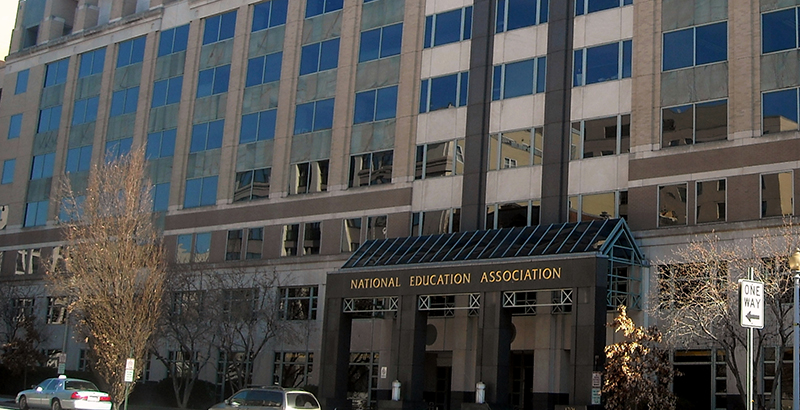Analysis: NEA Membership Is Down 9% Since 2009 & the Lowest It’s Been Since 2006. But Union’s Finances, and Political Influence, Still Going Strong

Get stories like these delivered straight to your inbox. Sign up for The 74 Newsletter
Everything was rosy for the National Education Association during the 2008-09 school year. Barack Obama was elected president, and the union reached an all-time high of 3,234,639 members.
But it has been a long, slow slide since then, as NEA membership has not recovered from the lasting effects of the recession, the U.S. Supreme Court’s Janus ruling and, now, the COVID-19 pandemic.
Numbers from early 2021 show a decline to 2,937,366 members, including retirees. That’s more than a 9 percent decline. Some state affiliates have lost a fifth or more of their members over the past five years. Though NEA still claims 3 million members, it hasn’t hit that figure at any time since 2011-12. Membership levels haven’t been this low since 2006.
But the evidence so far indicates that dwindling membership has had a negligible effect on the union’s overall finances. NEA and its state affiliates still take in almost $1.7 billion annually, as increases in dues tend to offset the loss of members.
There is also hope that the pain is only temporary. School districts flush with federal cash will spend most of it hiring new employees, and certainly some percentage of them will become NEA members. But recruiting isn’t as easy as it once was, thanks to the Janus effect.
Before Janus, teachers in states with agency fee laws had a choice: join the union or pay a fee equal to 70 to 80 percent of full dues. Most opted to forgo the small savings to avoid the hassle and lost privileges, such as liability insurance, that being a nonmember entailed.
Without the benefit of agency fees, unions have to persuade teachers to join when they now have the option of paying nothing at all. This is a much more difficult sales pitch.
One determined effort to boost membership has been a dismal failure. It took NEA five attempts and 13 years to finally get delegates to establish a new membership category, dubbed “community ally.” For $25 a year, any person who supports the union’s mission receives NEA email publications, members-only discounts to local restaurants and vendors, and “notification of and participation in membership activities that build support for public education, educators, and racial and social justice in education.”
The first year, the union managed to recruit 260 community allies. The second year, it added another 167. But apparently the community allies quickly lost interest, or NEA lost interest in them. The latest count is 32.
Even collecting dues has become a chore for some affiliates. The Michigan Education Association, with fewer than 80,000 working members, has sent more than 6,600 individuals’ accounts to collections for nonpayment of dues, according to an internal union document.
Union adherents have long predicted a resurgence in membership due to whatever current event dominated the news cycle, but NEA and other public-sector unions appear to be following the path trod by the industrial unions of 1950s and 1960s. Once powerful because of large memberships, they remain a force today because of money and political influence, despite decades of membership losses.
There are only two teachers unions, and they have an agreement that limits jurisdictional battles for members. With little or no competition for representation, teachers can’t go “shopping” for an appropriate union. This gives NEA even more staying power than the private-sector unions have. It will remain the primary force in K-12 public education policy even if membership loss continues — or accelerates.
Get stories like these delivered straight to your inbox. Sign up for The 74 Newsletter

;)